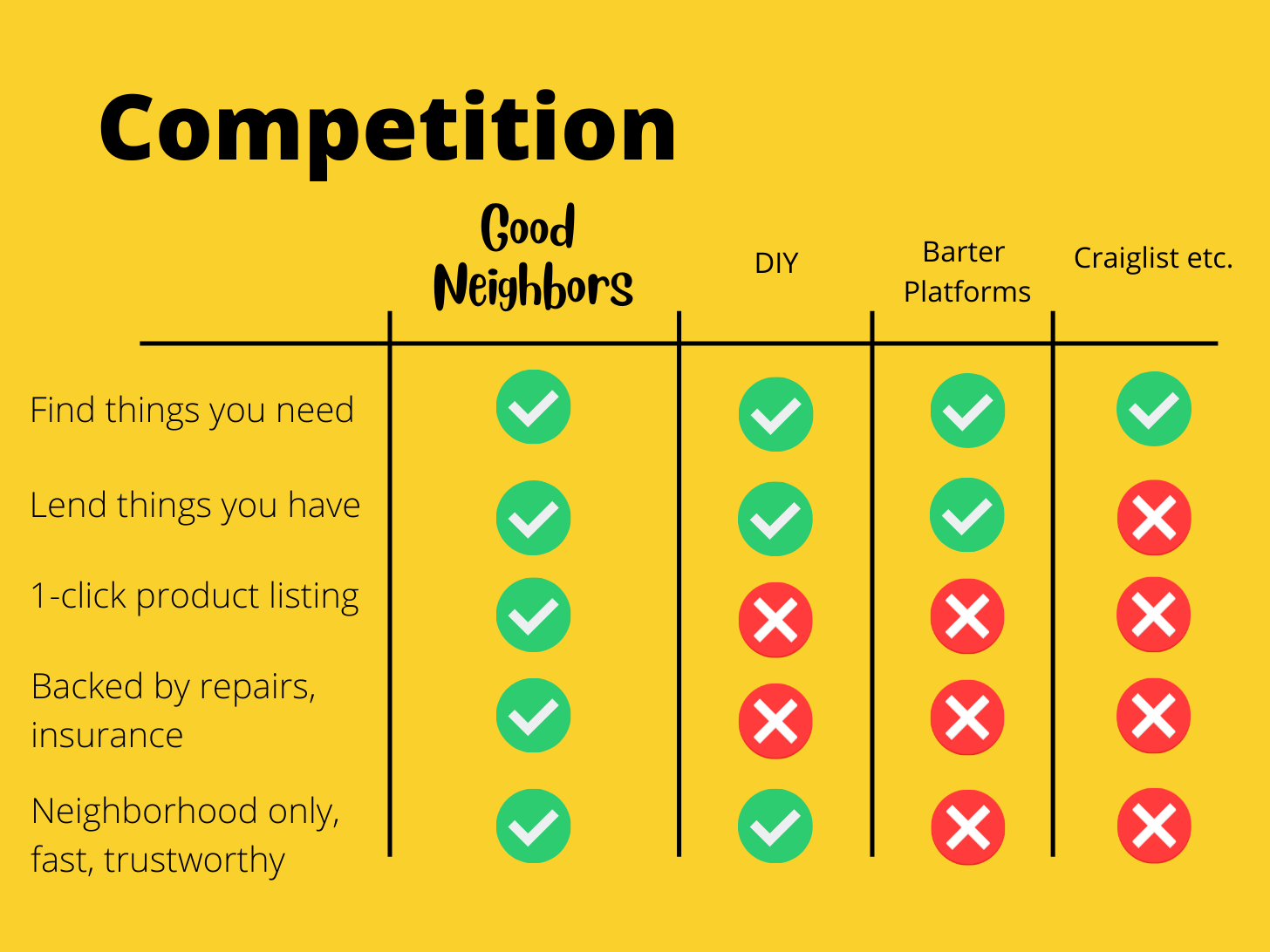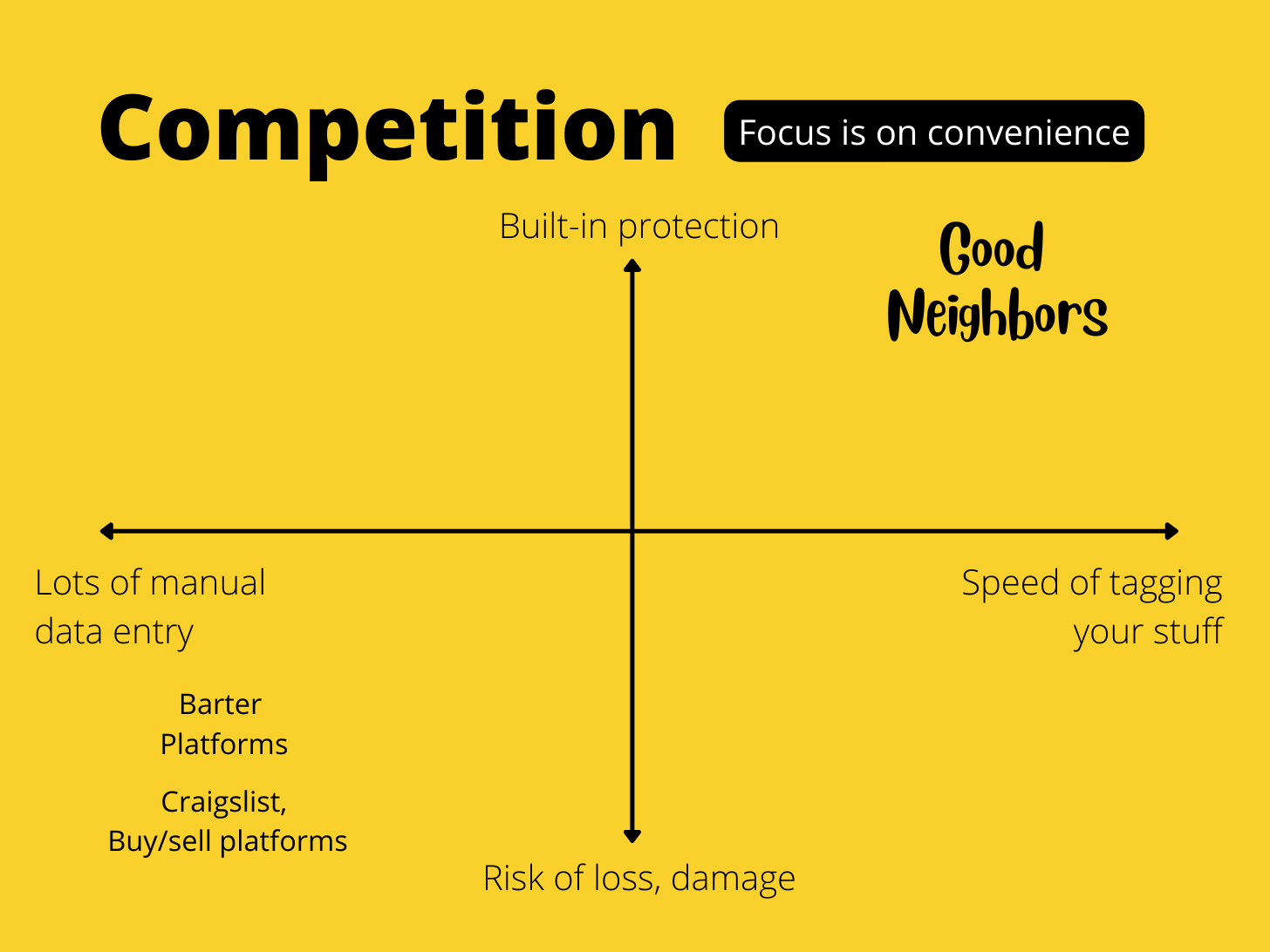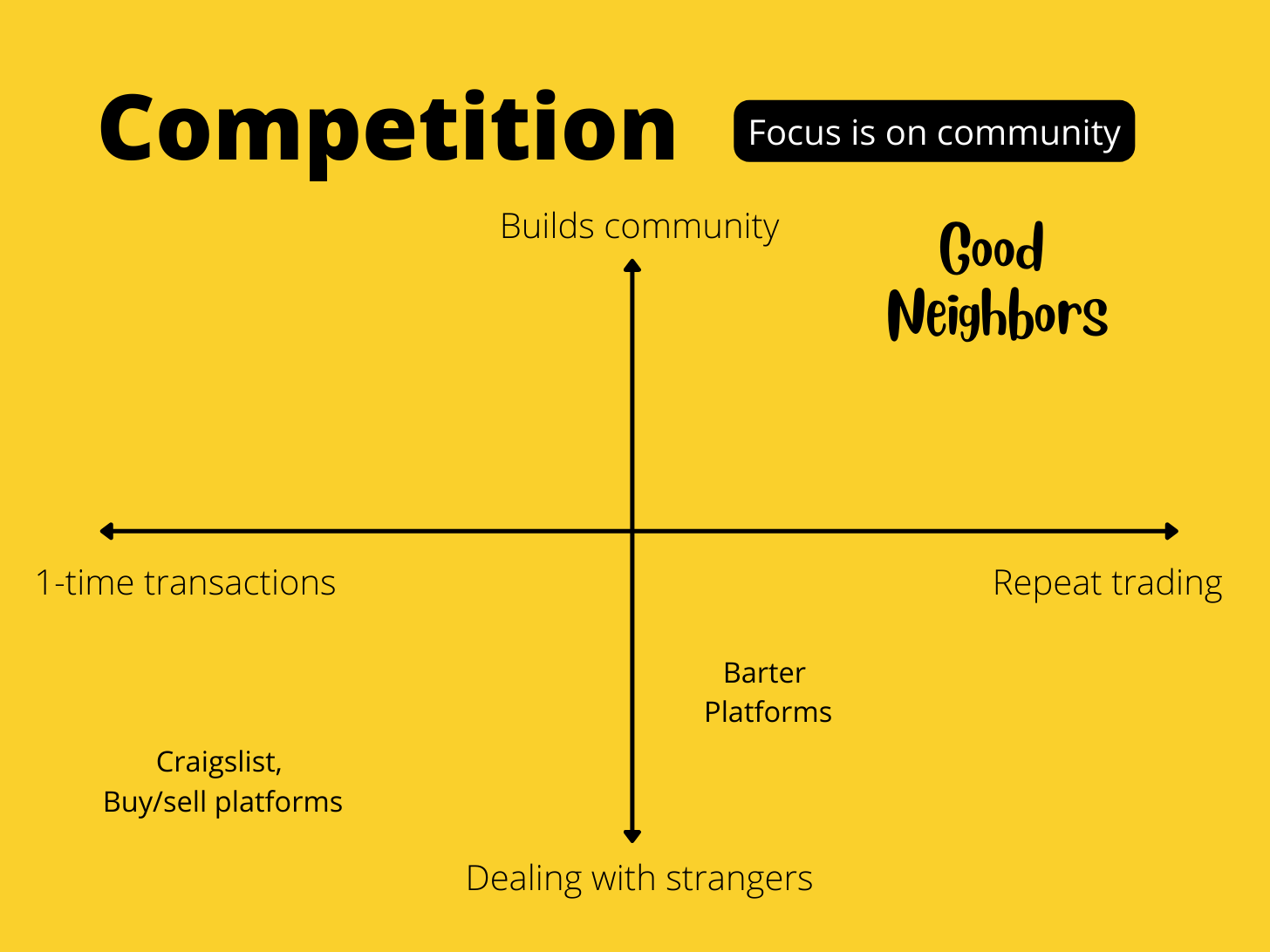If you’re joining late, I invented a startup called Good Neighbors and I’m creating (and tearing down) a fictional pitch deck. Read part one (Problem, Solution, Product) and two (Market).
What not to do
Here is an example of why a table does not make a good competitive analysis.

I’ve been more honest than most entrepreneurs who sneak in dubious claims like “better product” or “only voice-enabled NFT solution.” Overall, a table like this always implies that more things are better which is usually not the case for a startup. Different is better.
Problem #1 - too many categories
It’s hard to know what the key competitive advantages are when there are 5 (and often more) categories. Is everything important? I picked 5 things I thought differentiated Good Neighbors from competitors but not everything has equal weight.
Problem #2 - hard to compare different types of competitors
I listed 3 types of competition: doing it yourself (DIY), existing barter platforms, and buy/sell platforms like Craigslist. Because they’re so different a lot of Xs are because they just don’t do those things (eg a buy/sell marketplaces doesn’t let you lend out your gear). That means Good Neighbors has more checks marks but not a strong statement about why those things matter.
Problem #3 - implies more, not less, competition
No matter what you do, a table does not explain why a competitor cannot copy you. In fact, it looks easier to add a feature and get that sought-after check mark.
Final thought: if you do use a table you absolutely must cheat. Your logo should be bigger, theirs should be greyscale, and the space you give yourself should be bigger. They’re doing the same to you in their pitch deck.
What to do: competitive map
A 2-axis competitive map is the way to go because:
- It focuses your story on just two main ways you are better/different
- Placing competitors in different places lets you talk about their relative positioning which shows you know your stuff
- It shows why it would be difficult for competitors to turn around and copy you
I did two versions of the slide to show how drastically different the competitive analysis can be.
Variation 1 - focus on convenience
This most closely matches the Solution slide in the deck which is all about convenience. I focused on convenience of the lender because I think that is more unique vs the “searching for stuff” part of the platform.
1-click tagging of stuff (based on our image-processing IP) removes a huge barrier to using Good Neighbors. Even the built in protection (via insurance and a repair service) and geotagging are about convenience. You don’t need to think about it.

Now I can position the competitors. Buy/sell platforms make you write your own listings which is a hassle. It’s the same with barter platforms but on top of that I have to worry about damage or loss of my equipment, e.g. making sure it’s covered under my home insurance.
Overall, if I’m saying the core value of Good Neighbors is convenience, this is a good way to show us vs. them.
Variation 2 - focus on community
A more interesting approach would be to double-down on the community building aspects of Good Neighbors. This isn’t just a way to borrow and lend stuff. Our mission is to bring you closer to your community which benefits everyone.
For this approach I contrasted trading with neighbors (community) with trading with strangers. Most people don’t want to keep in touch with the person who bought their couch on Craigslist.
Unlike platforms, Good Neighbors is about repeat trades over time, potentially years. That’s a totally unique approach to building a platform.

One of the reasons micro-lending (e.g. Grameen Bank) works so well and has such a high repayment rate, is the focus on community. Lenders are required to be part of a community of lenders usually from the same neighborhood. This encourages good behavior.
A community-focused competitive analysis would reinforce this story. Being a good neighbor isn’t just the name of the company, it’s the mission of the company and why we think it will succeed.



